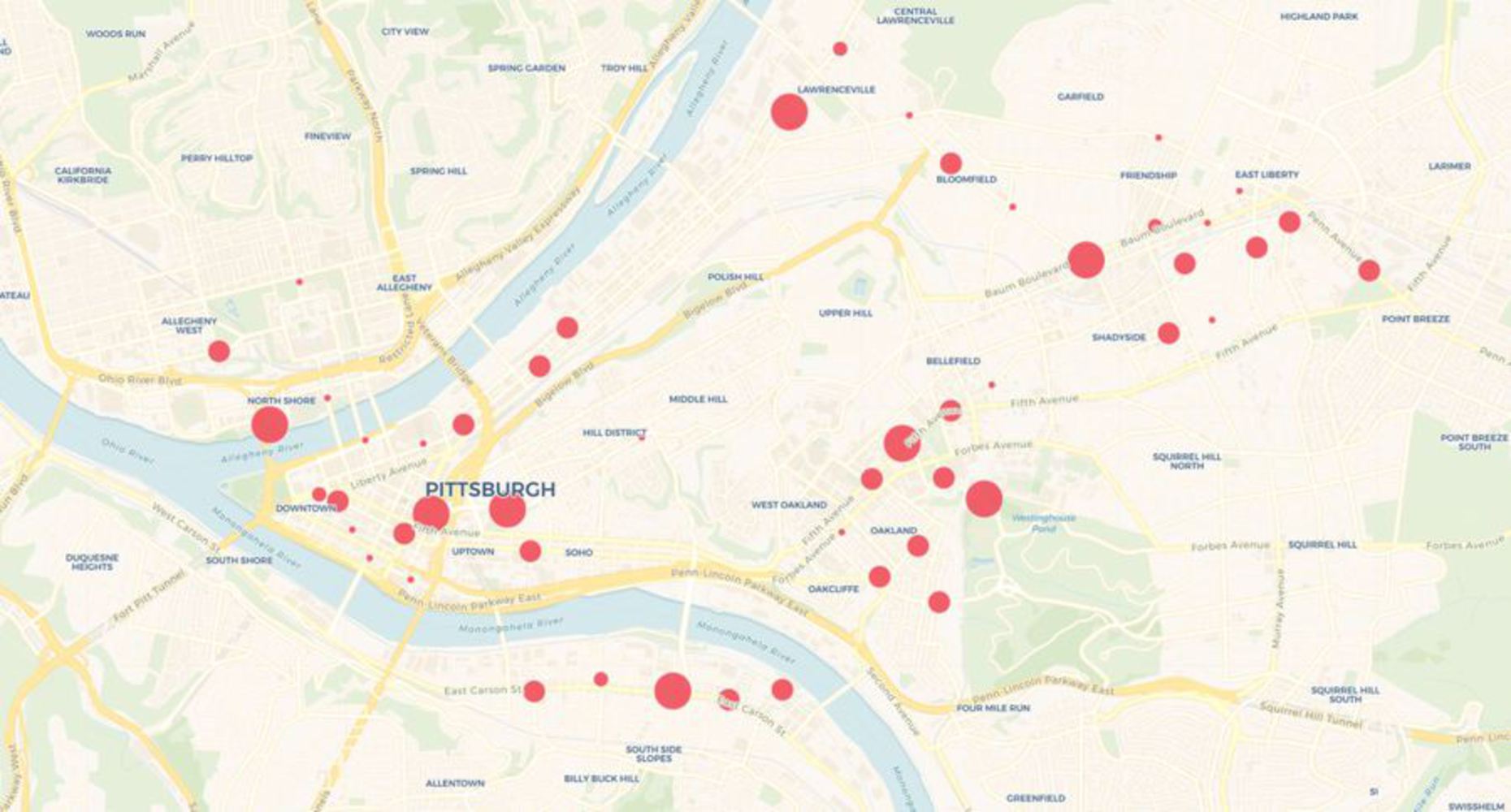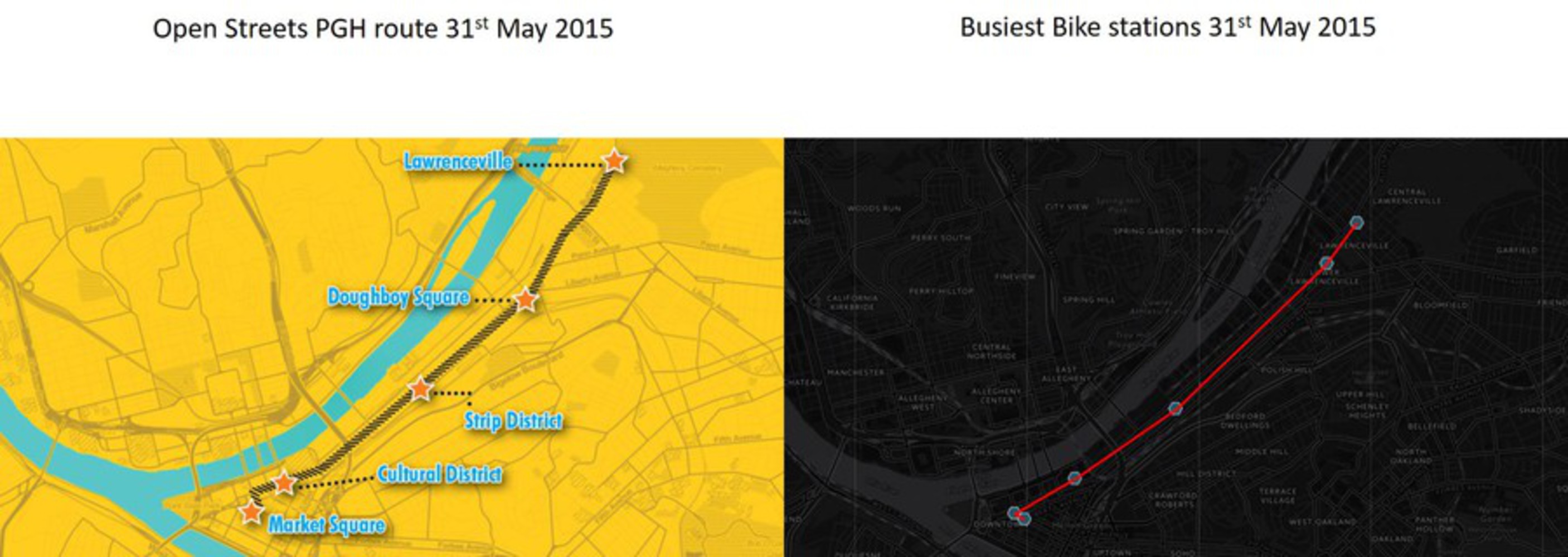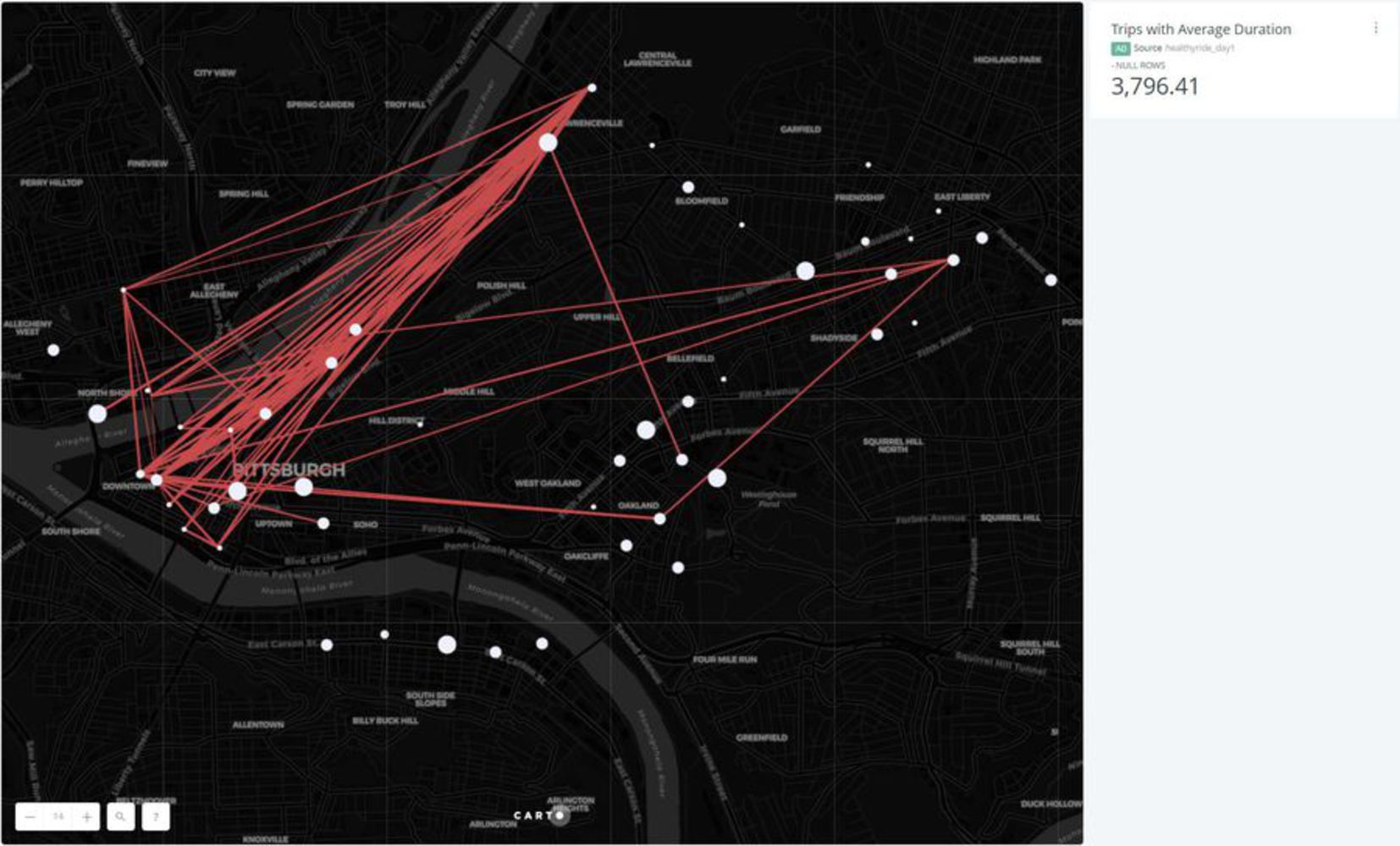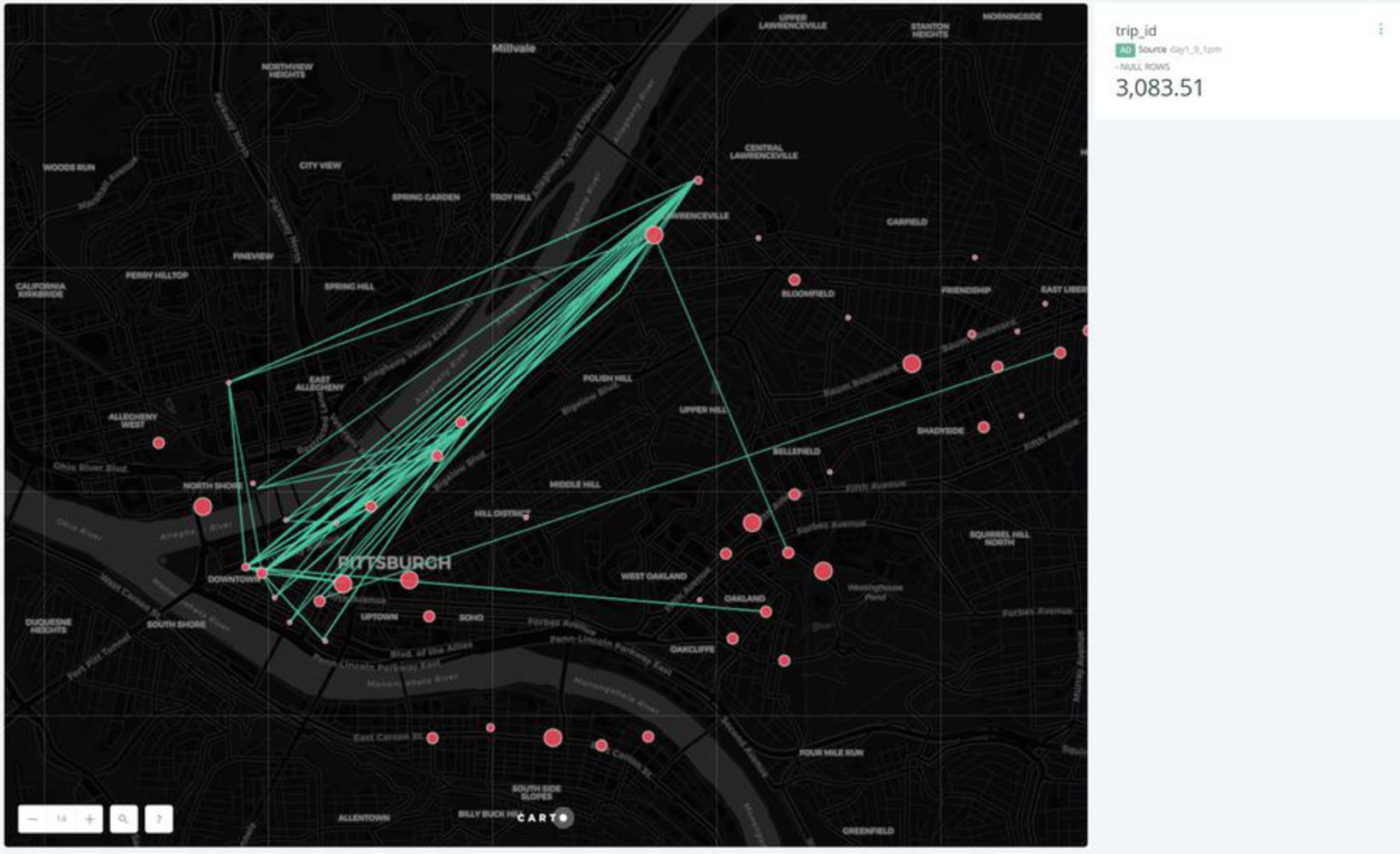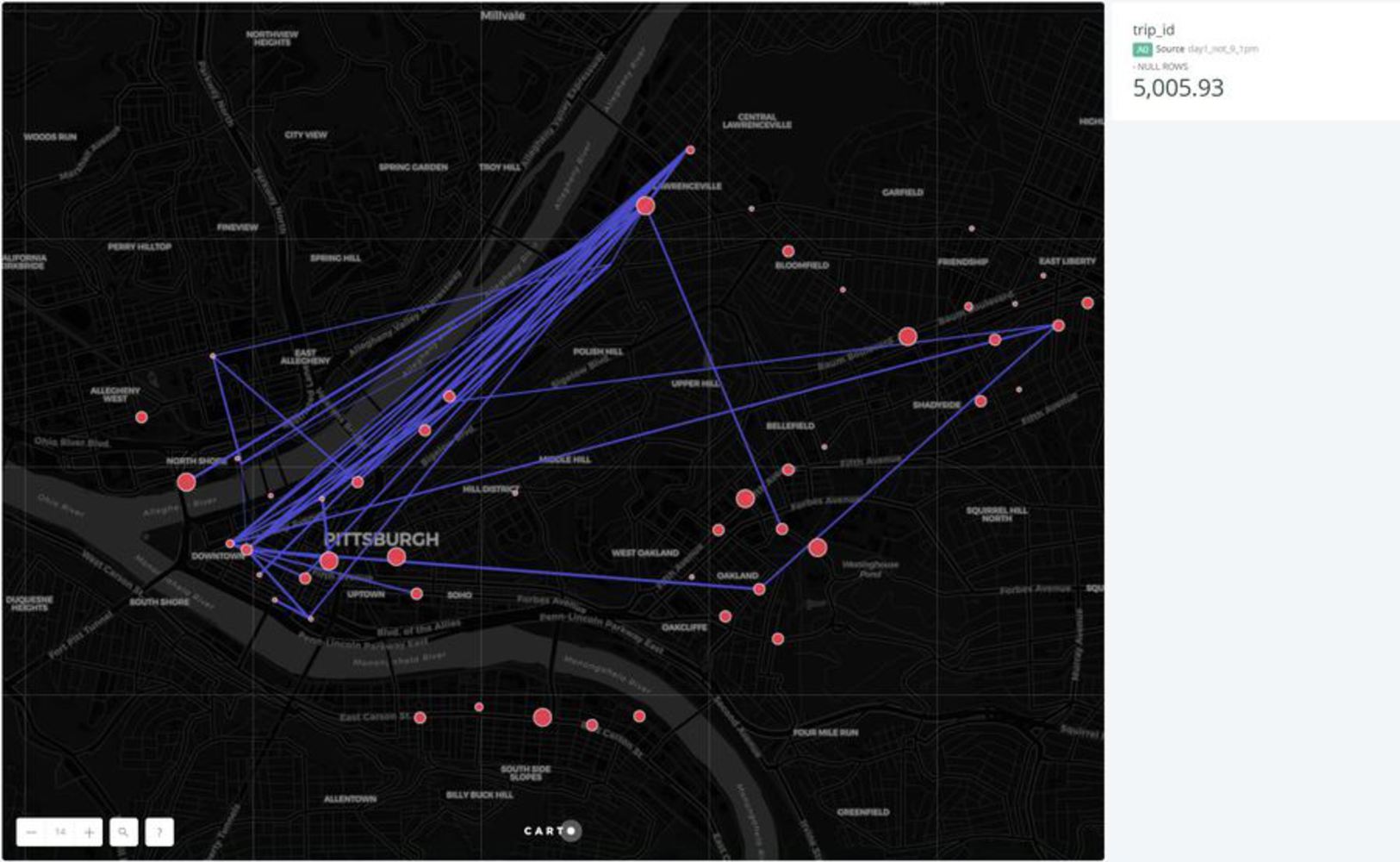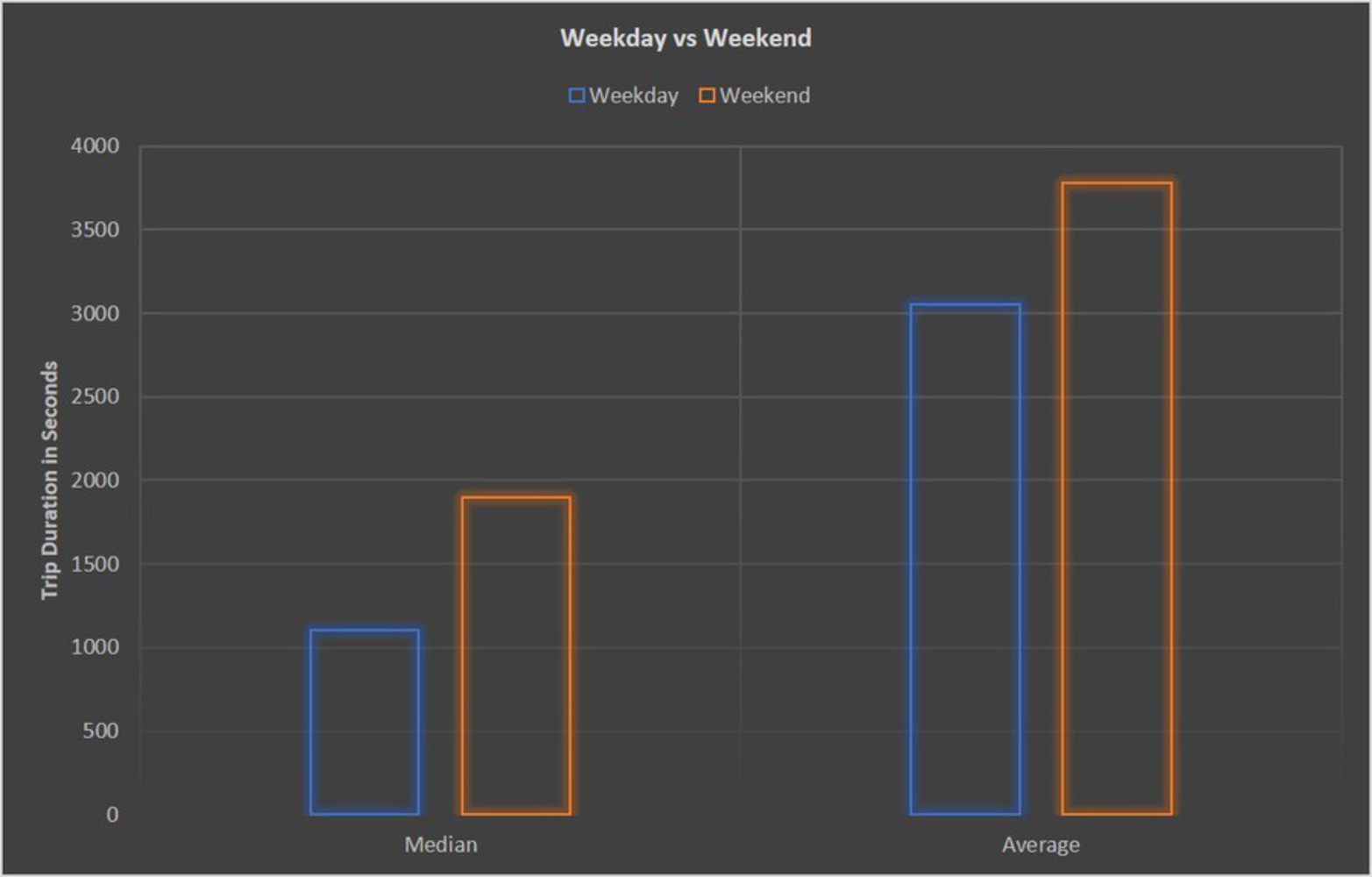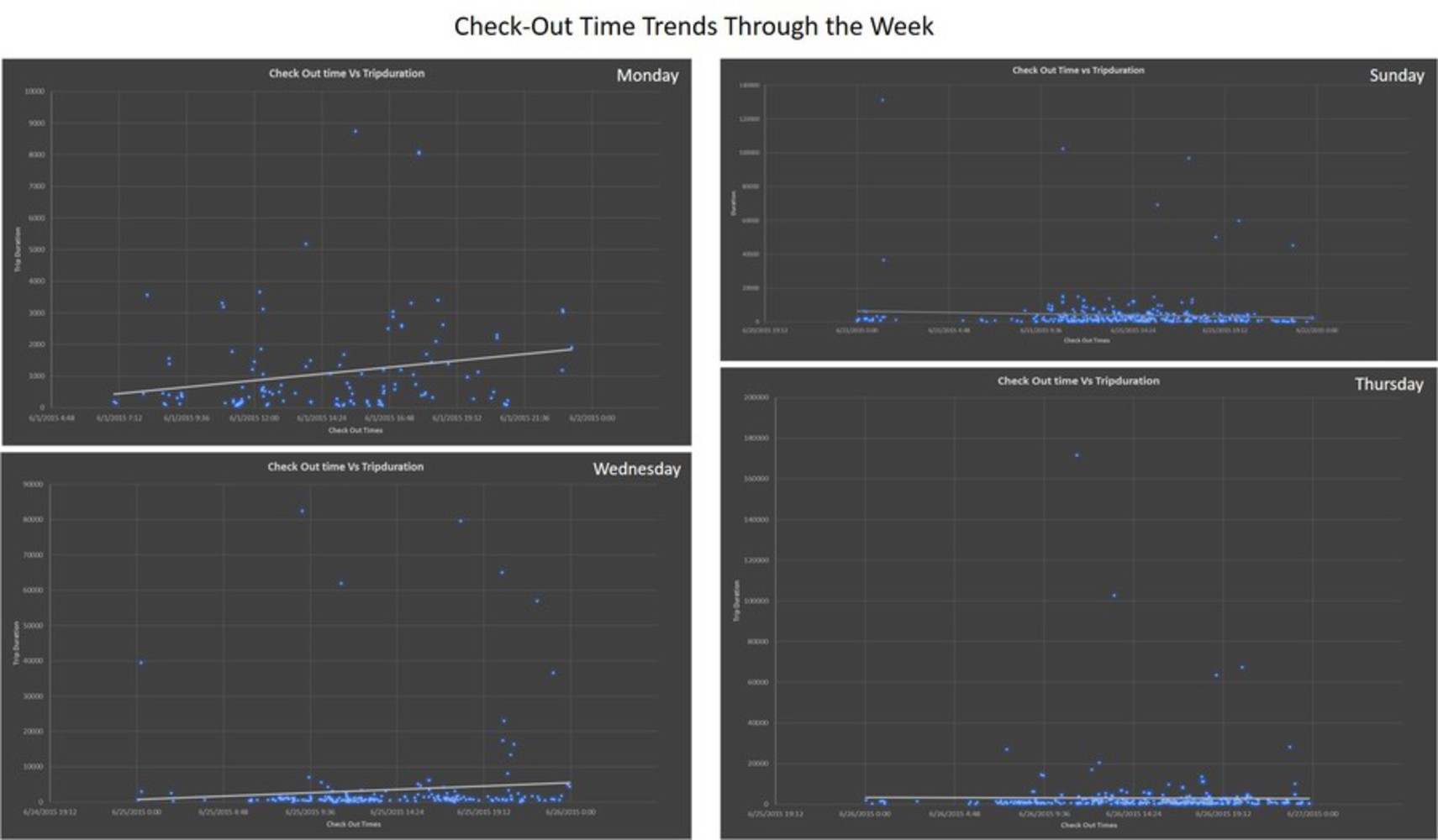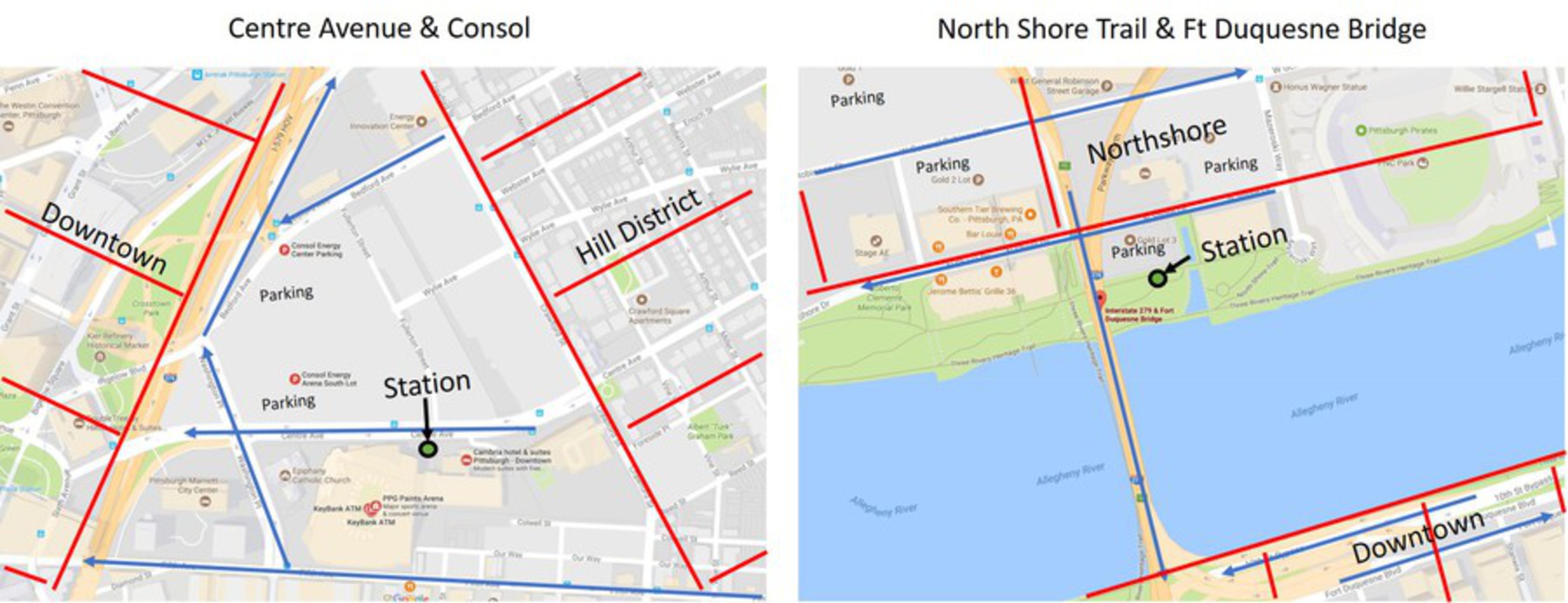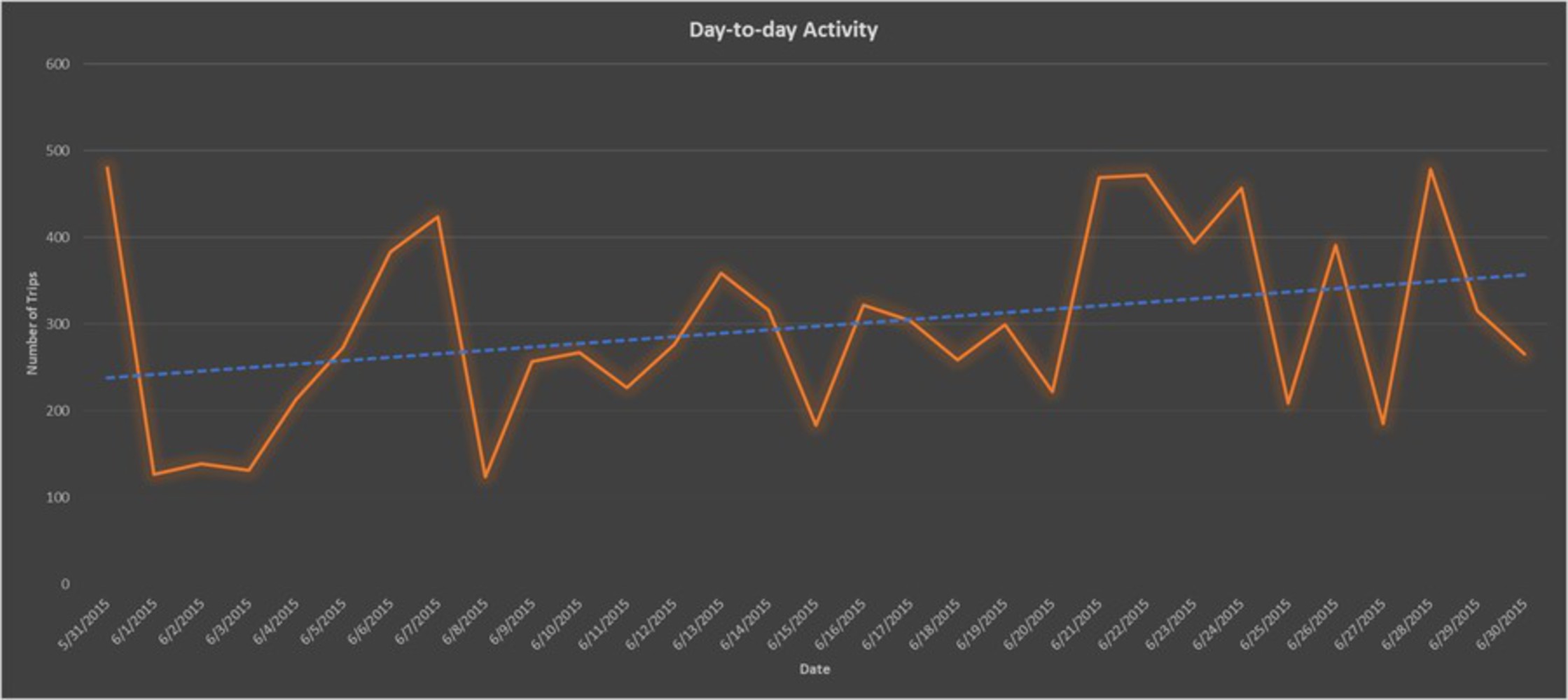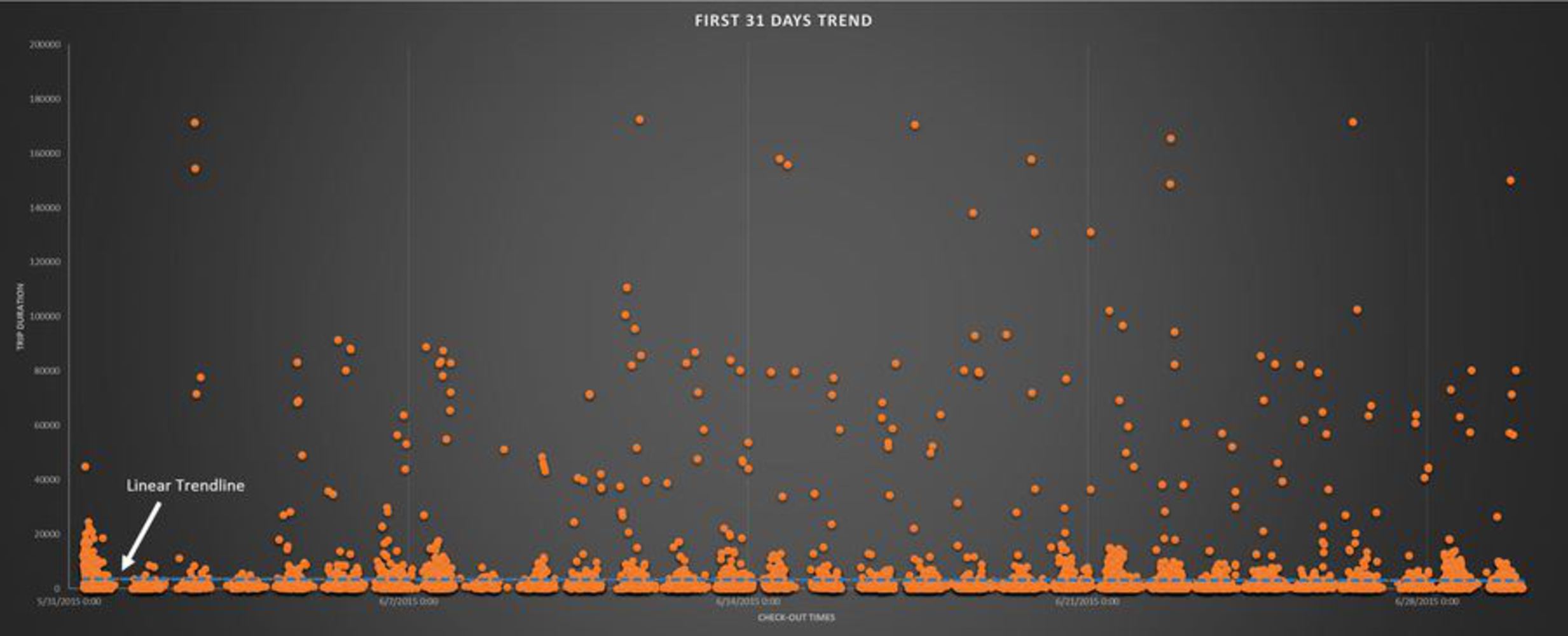Goals & Process
The objective of this project was to work on the Healthy Bike Program data for the first quarter of its inception (2015 Q2) and look at the dynamics of biking networks around Pittsburgh. Certain outliers/cases were also looked into to form a unique narrative around these networks for the first quarter.
The steps involved in the process are listed briefly below:
1. The raw and a bit complex data was first sorted, cleaned and processed as per the required approach taken.
2. This ‘processed’ data was then used to identify the dynamics of bike networks around Pittsburgh.
3. Case studies were identified to illustrate human/bike movement with respect to the program.
4. Visualizations/illustrations created to form a narrative around these movements
5. Insights gained from these visualizations noted and further used to create a narrative
Data-set:
Bike Activity Data
Healthy Ride Trip Data available on the WPRDC website was used and datasets downloaded from https://data.wprdc.org/dataset/healthyride-trip-data. The data was taken starting 31 May 2015 to 30 June 2015 and includes 9222 trips taken from 488 bikes docked at 50 different stations around Pittsburgh. On an average the trip lasted 55 Minutes and 20 seconds with a maximum of 48 hours and a minimum of 1 minute.
Station Data
There are 50 bike stations in Pittsburgh with an average of 18.12 racks (min 12, max 35). The stations at Centre Ave & Consol and North Shore Trail & Ft Duquesne Bridge are the most resourced with 35 racks. Ones at Federal St & E North Ave, S Euclid Ave & Centre Ave and Centre Ave & Kirkpatrick St are the lest resourced with 12 racks. The Image below shows the bike stations around Pittsburgh. The intensities of the location identifiers are based on the number of racks per station.
